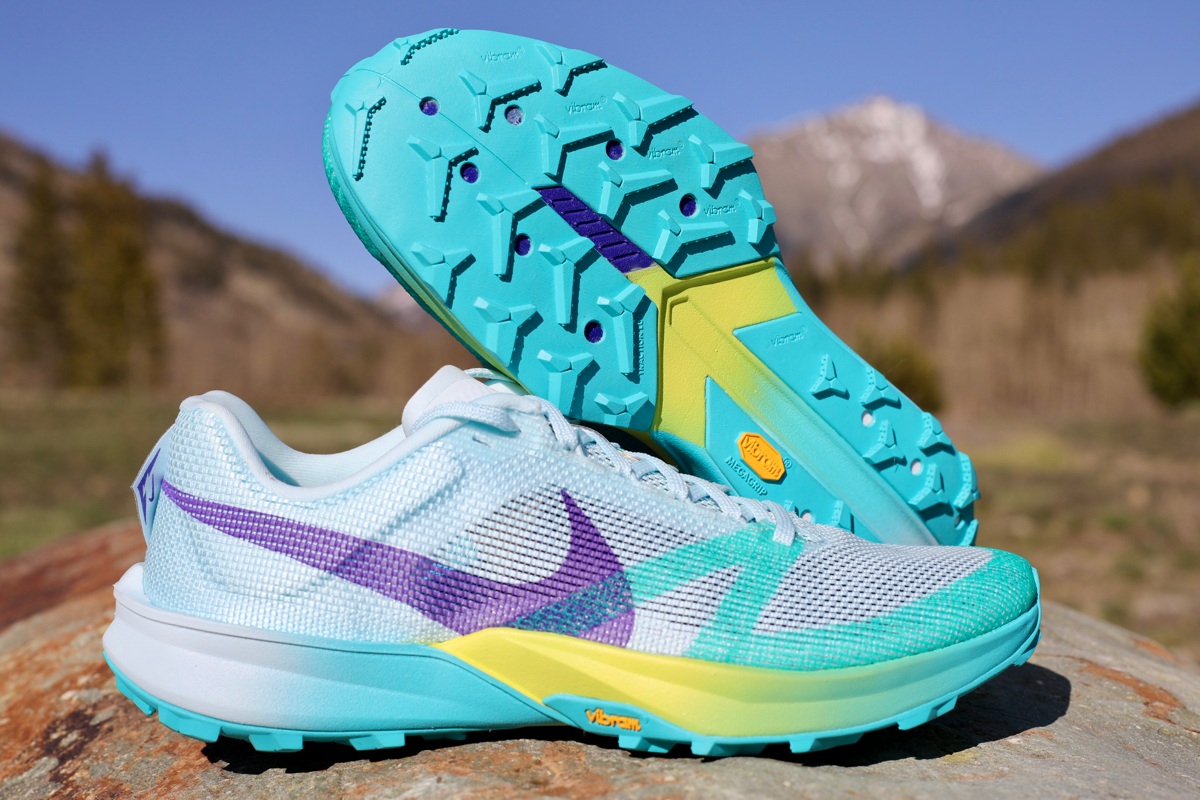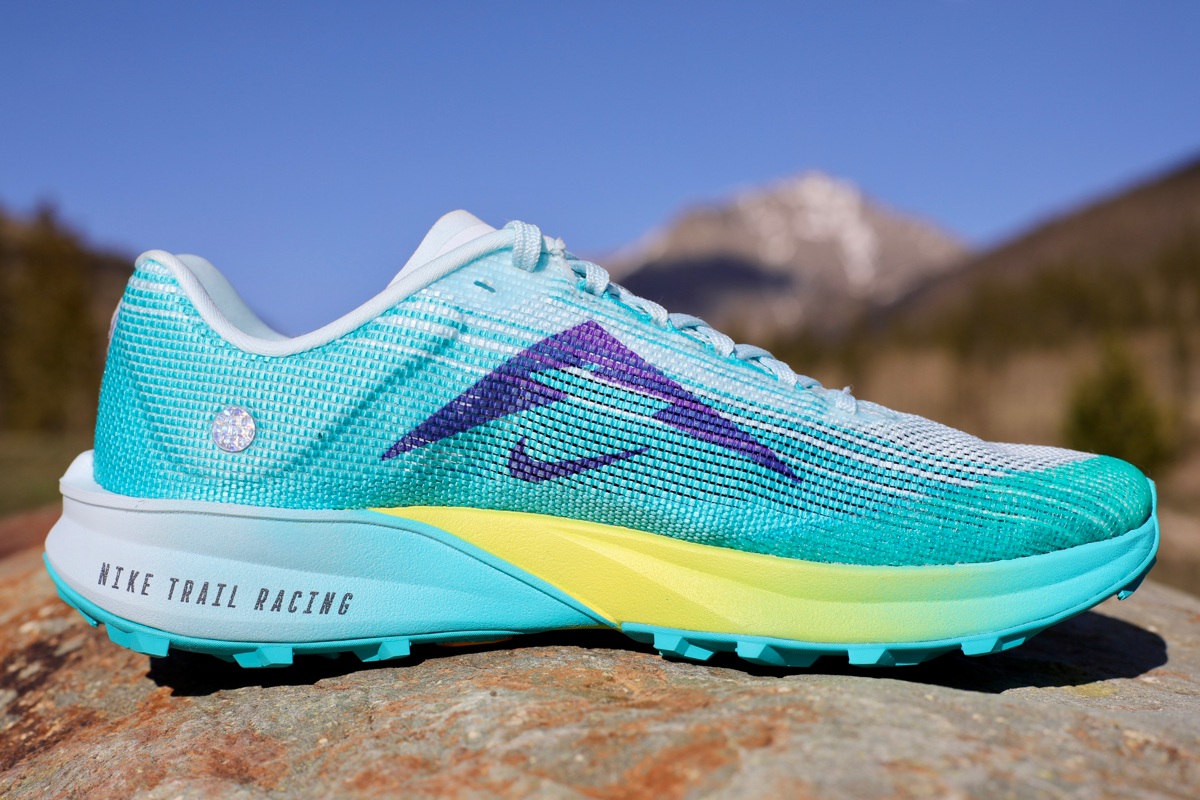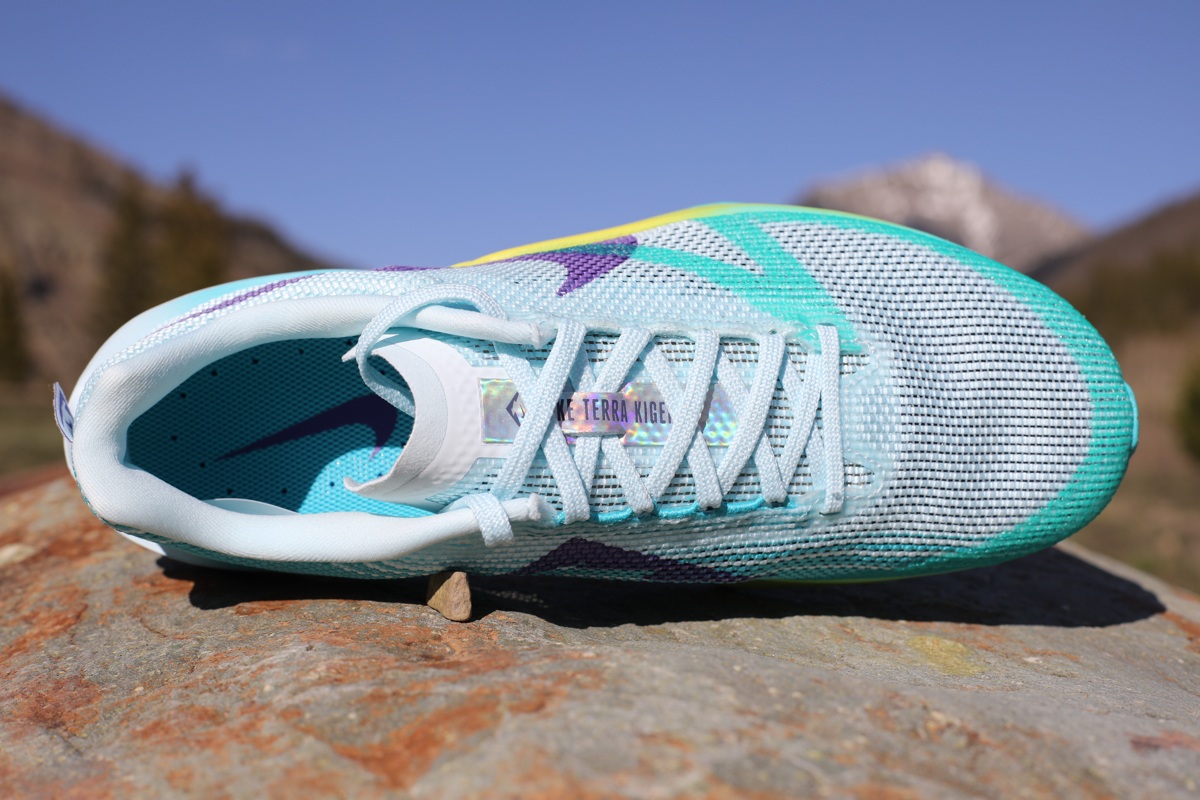There are two types of running shoes I generally gravitate toward: those with maximum cushioning and softness, and those with a low profile, snappy feel, and speed. The Nike Kiger 10 ($170), which the brand puts in its trail racing lineup, falls into the latter category.
With an actual weight of 9.3 ounces (264 grams) for a U.S. men’s 9, they’re certainly not the lightest racing shoe — even in the trail racing world, where shoes are generally heavier than road racing. But for what they lack in lightness, they more than make up for in snappiness. The relatively low stack height of 29 millimeters at the heel and 24 millimeters at the toe, and the resultant 5-millimeter drop, definitely helps the shoe feel closer to a racing flat or spike than other trail racing shoes.
But don’t let all of this racing talk turn you off if you’re not looking for a trail racing shoe. I’ve logged more than 150 miles so far in the Kigers, and none of those were racing. These shoes will work equally well for someone looking for a snappy race-day shoe as someone like me who likes the feel of quicker, snappier shoes for everyday runs and training on trails or gravel roads.
Interestingly, the shoe is only available in a single model that the brand’s website identifies as men’s, while many running retailers identify it as unisex. Previous versions of the shoe, including the Nike Kiger 9, Nike Air Zoom Terra Kiger 7, and Nike Air Zoom Terra Kiger 5, have come in both men’s and women’s versions.
Shop the Nike Kiger 10Nike Kiger 10 Upper
The Nike Kiger 10 has an updated upper made with engineered mesh. The Kiger 9 also had an engineered mesh upper, making it difficult to discern much of a difference, but that’s not a bad thing. The upper remains lightweight and highly breathable — you can see through it slightly — and it fits comfortably and securely around my feet.
The other highlight of the upper is the plush heel collar. Nike could’ve easily saved weight by cutting back on the cushioning in the heel collar, but they chose comfort over saving a few grams, and I appreciate it. I was testing the Hoka Mafate Speed 4 Lite at the same time as the Kiger 10, and the shoes couldn’t have more extreme approaches to heel comfort. The Mafate Speed 4 Lite ripped the skin on my heel apart, while the Kiger 10 was like stepping into a pillow. I had no issue with rocks or debris getting inside the shoe.

Running in the Nike Kiger 10 on singletrack trails in Silverton, Colorado. Photo: iRunFar/Eszter Horanyi
The lacing system and tongue are fairly standard. The lacing system provided a locked-in feel when done right. I did have an issue with my right heel being loose when not being intentional about tying the laces properly. Overall, the upper is definitely on the narrower side, especially in the toebox.
From the get-go, I never experienced blisters or hot spots. These were one of those rare shoes where I felt confident taking them for a 10 miler right out of the box.
Nike Kiger 10 Midsole
The Nike Kiger 10 also received an update in the midsole, transitioning from Nike React midsole foam to Cushlon 3.0 foam. React and Cushlon are both base-level, workhorse midsole foams used by Nike, and you don’t get the spring, bounce, or energy return of a higher-end racing shoe.
The midsole foam has a low enough profile that when coupled with the shoe’s light weight, it gives the shoe an agile and quick feel. Even during my longest trail run of the year, I could feel confident navigating a technical downhill towards the end thanks to the agility of the shoes. A new rock plate in the forefoot provides extra protection over rough terrain, and I never had any issues with sharp rocks hurting my feet.
Nike Kiger 10 Outsole
The outsole of the Nike Kiger 10 provided grip that exceeded my expectations. Nike uses a Vibram Megagrip outsole, and the lugs are multi-directional and widely spaced. They’re also not super deep, but they work. I found myself hardly slipping on rocky, sandy, and gravel trails and roads. The outsoles inspire confidence, which is important considering these are racing shoes.
One thing that makes me really love a running shoe is when it has enough versatility to handle multiple types of surfaces and runs. I appreciate shoes that can handle pavement, gravel, crushed rocks, and dirt, and work as a daily trainer or for fast miles and workouts. The Kiger 10 does a pretty good job of hitting a lot of those categories. While not ideal for pavement, they’ve definitely worked fine for me when my runs require a mile or two of pavement to get to the trails. These shoes can handle anything from daily miles to long runs to fast miles and races, and a lot of that has to do with the versatility of the outsole.
Nike Kiger 10 Overall Impressions
The Nike Kiger 10 has become one of my go-to trail running shoes and one I reach for when I want to just go out and run, not worrying about what’s on my feet. It’s also a shoe I reach for when my legs are tired and I want a shoe I know will help me feel a bit better than I should.
I’m nearing 200 miles on these shoes, and there are virtually no signs of wear and tear. These aren’t necessarily the highest-end racing shoes on the market, but they provide a lot of versatility and will work just fine in a racing environment.
For anyone looking for a do-it-all daily trainer for dirt, rocks, and gravel, or someone looking for a solid and affordable trail racing shoe, the Nike Kiger 10 is an excellent choice.
Shop the Nike Kiger 10Call for Comments
- Have you run in the Nike Kiger 10? What do you think about it?
- What other affordable, race-ready shoes do you like?
Our Favorite Trail Running Shoes
Check out our Best Trail Running Shoes article to learn about our current favorite trail running shoes!





